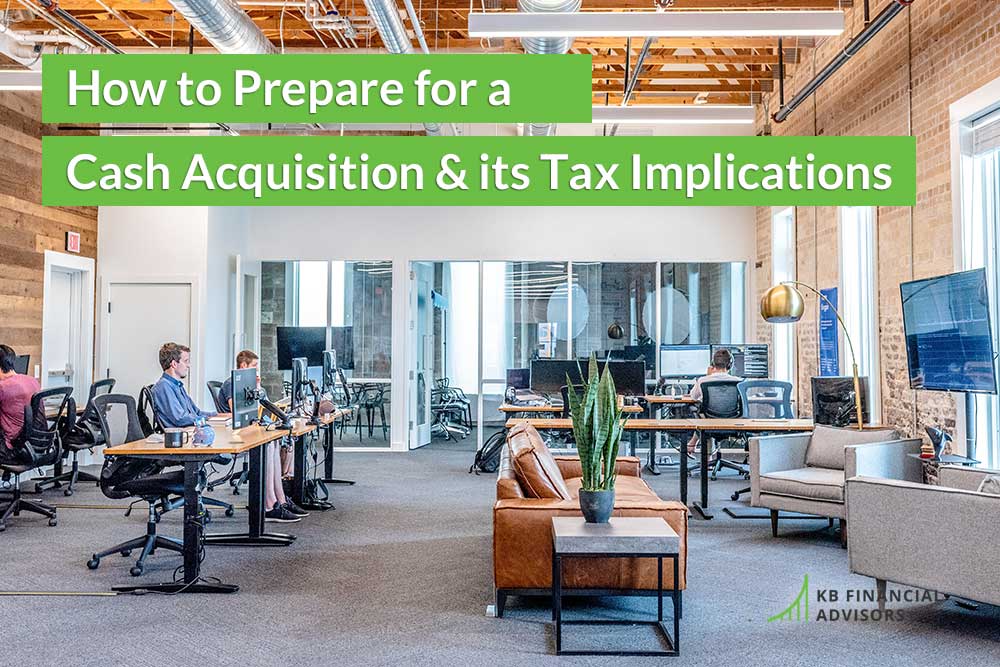Let’s set the scene: Your company went through the initial public offering (IPO). While your coworkers all busily exercised their options and sold stock, you didn’t. You decided to wait and see.
Maybe you felt uncertain about what to do, or you didn’t want to make a mistake. You might have been focused on your work and simply too busy to determine your best course of action.
One year turned into two years, and two years is starting to creep into three… and you’re still sitting on your stock options.
You might have had your reasons for waiting before, but now, you need to act because continuing to delay any action could come at a price.
Considering the Cases of 5 Recent Tech IPOs
We’ve seen many tech IPOs in the past few years, but I want to highlight five of them for this discussion. Here are the details on each:
Square (SQ)
- IPO date: November 19, 2015
- Total offering: $243 million
- Lockup expired: May 17, 2016
- Total return as of March 12, 2018: 335.60%
- Total return of the Vanguard Total Stock Market ETF: 33.14%
Twilio (TWLO)
- IPO date: June 23, 2016
- Total offering: $150 million
- Lockup expired: December 20, 2016
- Total return as of March 12, 2018: 16.10%
- Total return of the Vanguard Total Stock Market ETF: 33.46%
Ichor Holdings (IHCR)
- IPO date: December 9, 2016
- Total offering: $52.9 million
- Lockup expired: June 7, 2016
- Total return as of March 12, 2018: 164.99%
- Total return of the Vanguard Total Stock Market ETF: 22.51%
Mulesoft (MULE)
- IPO date: March 17, 2017
- Total offering: $221 million
- Lockup expired: September 13, 2017
- Total return as of March 12, 2018: 38.22%
- Acquired by Salesforce (CRM) on March 20, 2018
- Total return of the Vanguard Total Stock Market ETF: 15.95%
Okta (OKTA)
- IPO date: April 7, 2017
- Total offering: $187 million
- Lockup expired: October 4, 2017
- Total return as of March 12, 2018: 51.67%
- Total return of the Vanguard Total Stock Market ETF: 18.27%
You can come back and reference these numbers as we continue this conversation, but for now, let’s move on and figure out why you need to make a plan your stock options.
What We Can Learn About What to Do with Stock Options After an IPO from These Examples
When considering exercising options and holding shares, we often use the Vanguard Total Stock Market (ETF) as a comparison.
The idea behind this is that you can invest in your company, or you can invest through this example ETF in every US company. Which would be better? Let’s consider the IPOs above to see what the right moves would have been.
Twilio is the only company that has been a worse investment than the total U.S. stock market. Since IPO, it has increased in value just 16.10% compared to 33.46% for the total US market over the same period.
If you have $1 million of TWLO, it’s now worth $1,160,000. $1 million of VTI over the same period is now worth $1,334,600.
Twilio employees who didn’t or aren’t exercising options or are holding RSUs are costing themselves money. It’s a good reminder of the importance of having a plan before the IPO so your hesitation or failure to act doesn’t cost you.
All four of the other tech IPOs outperformed VTI since their IPO. Doing nothing is typically a bad plan, but in this case it didn’t cost these employees money. Square (up 335.60%) and Ichor Holdings (up 164.99%) are the big winners here.
Doing nothing with your RSU and options for these companies may have increased your wealth by millions… at least, according to the numbers on the screen. And that poses its own challenges.
The Side Effects of Screen Wealth
There are two odd side effects that go with this rapid increase in “screen wealth,” which is what we call numbers that appear on your computer screen but not in your bank account:
- Euphoria: Feeling like you have won the lottery, which can lead to really bad spending decisions.
- Crippling fear: You were afraid of screwing up when you had a $1 million of stock options at the IPO. That fear only multiples as the money goes up. (You can conquer your fear by starting a relationship with an advisor who has helped others like you.)
It’s critical to understand that the price of a company’s stock at any moment has nothing to do with what you know as an employee, and everything to do with what millions of investors think they know about your company.
Stock prices in the present have nothing to do with facts and everything to do with opinions. Over the long term facts matter — but the ride between now and then can be very bumpy.
That’s why it’s critical to create a plan you can actually act on now instead of continuing to sit on stock options after an IPO and risk making mistakes or missing opportunities.
What a Deeper Look at the Twilio IPO Tells Us
We already reviewed Twilio’s performance since the IPO and compared it to the Vanguard Total Stock Market ETF (ticker VTI), but that’s not the whole story.
The stock shot up in value over 100% during the first few months of trading. This can lead to recency bias, which is when you use your recent experience as a baseline for your future expectations.
In other words, you believe the stock will continue to go up so you hold.
When it goes down, you remember that much larger dollar amount that used to be on your screen. You think it will come back.
In your mind, the old number is what it’s worth, and the market is wrong. So again you do nothing except watch the number fall.
This happened to many Twilio employees, and we’ve worked with other employees at Twitter and LinkedIn who had a similar experience.
At some point, it could happen to Square, Ichor, and Okta too. The fact is, even great companies go through periods where the stock underperforms.
And don’t forget all 5 IPOs occurred during a time when the stock market as a whole has done nothing but rise. That won’t always be true.
What happens in the entire market will impact your company, which makes it critical to take a balanced approach — and to put together a stock option strategy that works for your situation.
What to Do Now with Your Options and Shares: A 3-Step Process
If you don’t know what you’re going to do with your options and shares, now is the time to start thinking about it. Use this three-step process to get started.
1. Put Together a Plan That Contains an Organized List of Your Options
Gather all the information you have about your options and write it out, including:
- Type, such as ISO or NQ
- Exercise price
- Bargain element
- Expiration date
You’ll also want to include information on the shares from your options, and list out the acquisition date as well as the cost basis.
If you have RSU shares, there is no reason to hold onto them. You are taxed at ordinary income rates when they vest, so you should sell them when they vest or as soon as possible thereafter.
2. Think About Taxes
Start by fully understanding your current tax scenario, which is the “do-nothing” scenario since you’ve only sat on your stock options after an IPO.
That means getting answers to questions like, “what will your marginal tax rate be if you just earn salary, bonus, and RSU?” That’s the rate you pay on the last dollar you earn.
For example, if we determine that your marginal rate is 35%, that tells us if we add $1,000 in income it will cost you $350 in taxes. If we deduct $1,000, you’ll save $350.
It also tells us that you can go up a bracket, to 37%. You need to know at what point your bracket will go up to build out scenarios for different combinations of exercising and selling. Compare this with your current do-nothing strategy and see where you can come out on top.
But don’t let the tax tail wag your wealth dog. Taxes are unavoidable so there is no situation in which you pay no taxes. And a decrease in the share value will quickly eliminate the benefit of avoiding taxes, anyway.
3. Consider Your Goals
Are there specific things you could use your options or shares to pay for? These could include:
- Debt repayment (in order of importance, that would be: credit cards, car loans, student loans)
- Buying a home
- Paying for a child’s college
- Achieving financial freedom for yourself (which means freedom from having to work and earn a paycheck)
What you need to reach financial freedom is easy to calculate once you know what your annual expenses are. Let’s say your life costs you $150,000 every year. Use the 4% withdrawal rate:
$150,000 / .04 = $3,750,000
That means $3,750,000 will give you the freedom to choose whether or not you work.
In absence of funding a specific goal, it can be helpful to set a target percentage of your investment portfolio for the company stock. We usually recommend no more than 25%.
Let’s use Square as an example here. Say you had $1 million at the IPO, which combined with your other existing assets brings your net worth to $5 million today. Here’s what to do:
- Develop a plan to sell your position in Square down to $1,250,000
- Invest the cash from selling Square into a well diversified portfolio
Why? Because if the stock goes up, you’re smart because you did not sell all of it — and if the stock goes down, you were smart enough to sell. Either way, you win.
Sitting on a Pile of Cash from an IPO? It’s Time to Act
Maybe you sold a little bit of your options and shares. Now you are sitting on a bunch of cash because you knew that you needed to sell some — but never got around to what to do next.
You must understand cash has a cost: it’s opportunity cost, or the difference in dollars between what you did and what you could (your opportunities) have done. That cost only grows with time.
Let’s say you sold enough of your options and RSUs to net $250,000 in cash. You kept the cash in a 1% savings account for the last two years. Here are the numbers compared to investing in the entire US stock market using VTI as a proxy:
- $250,000 cash from the IPO
- Kept in a 1% savings account = $255,048
- Invested in the total US stock market (VTI) = $333,650
Opportunity Cost – $78,602
Every year the cost will get higher.
So what should you do? First, determine the appropriate amount of cash to keep on hand. Usually we suggest 10% of your annual income and an emergency reserve that is 20% of your annual income or your mortgage, whichever is greater
Then develop a plan that you feel comfortable with. Remember, you have to run your own race. In working with clients, we have our recommended starting point, but the client-advisor relationship is a partnership. We collaborate together to find what works best for you.
When the relationship works well, we develop a plan that may look a little different from our starting point — but it’s also a bit different from what you would have done on your own.
Here are two examples:
First, let’s say you want to hang on to lots of cash, because you like the feeling of having cash on hand. Fine. We’ll increase the amount that you keep, and at the same time we’ll work to increase your confidence and comfort with investing.
Second, maybe you’re just too busy to invest and cash piles up. This becomes a strong signal that you need to delegate the work of investing cash to your advisor.
Regardless of whether you know what you want to do with your money, it’s wise to work with a financial advisor who can help you figure out what’s best for you.






